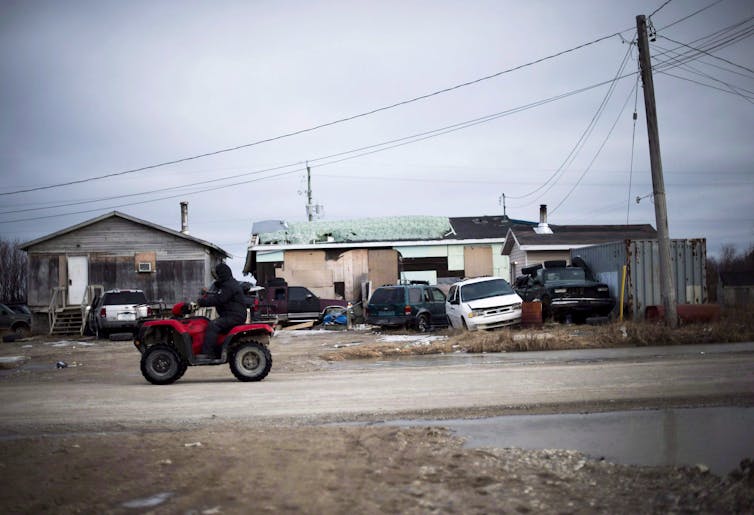We finally have a chance to get it right.
For the first time in history, Canada has launched a $1 billion investment dedicated to First Nations, Métis and Inuit infrastructure. The Canada Infrastructure Bank (CIB) is establishing the Indigenous Community Infrastructure Initiative (ICII), which will enable the building of new infrastructure projects in Indigenous communities and help generate investments in projects that are vital to economic growth and environmental protection.
For decades, the promise of investments and dedicated funding have fallen flat. Limited to what the federal government can fund within their restrictive policies and confined by an infrastructure funding process that is flawed, sluggish and heavy regulated. Resulting in lackluster infrastructure projects that limit Indigenous autonomy and self-determination.
This has forced Indigenous people to think outside the box, leverage their own funds and find solutions through their own means to the growing infrastructure gap that has permeated Nations for decades.
Process, mechanisms and sustained support
While investments in infrastructure are important, what’s more important is the process and mechanisms through which Indigenous people access funding, sustained support and long-term funding needs.
The pandemic has shed light onto the influence of our built environment with regards to the health and well-being of Indigenous people, from overcrowded housing, insufficient water supply and sanitation, and inadequate water quality.
Read more: Indigenous youth are playing a key role in solving urgent water issues
Over the past 20 years, while infrastructure gaps have widened, with estimates placing them at $25 billion to $35 billion, new and existing infrastructure has continued to deteriorate at a rapid rate, fuelled by the chronic underfunding of operation and maintenance.
In his role as Minister of Indigenous Services, Marc Miller has made substantial investments in Indigenous infrastructure. But the reality is that the infrastructure need is so great, and the divide so deep, that it cannot simply be tackled by infusing dollars into the system. And while the investments announced this month represent important infusions into a dwindling pot of money, it’s important to remember that increased funding is only one of the areas that has to be addressed.

Not enough to tackle critical infrastructure deficit
The funds are earmarked for revenue-generating projects: providing loans of at least $5 million, for up to 80 per cent of total project costs to potentially tackle large infrastructure projects like investment in clean water, broadband, public transit, clean energy, trade and transportation.
The funds however, aren’t likely to address the long-standing critical infrastructure deficits like water and wastewater despite what the CIB says.
The Indigenous community infrastructure gaps across Canada aren’t only contained to drinking water, housing and wastewater treatment crises that many Canadians are familiar with; these include a breadth of assets such as roads, bridges, energy, broadband connectivity, trade and transportation.
Three separate funding crises
In order to address these infrastructure gaps, we must first address that the infrastructure gap creates three separate funding crises.
First, there has been widespread inadequate funding of infrastructure on reserve resulting in sometimes no infrastructure at all. This lack of investment into building new infrastructure means that the gap to accessing infrastructure is greater for Indigenous people across the country. To rectify this we must bring all Indigenous Nations up to a standard that matches non-Indigenous Canadians.
Second, the infrastructure that is in place has not been adequately funded, resulting in systems that are dilapidated, unkept and have further deteriorated past the point of repair. This means substantial investments are necessary to bring existing infrastructure to an acceptable level and standard.
Third, the first two funding needs are representative of existing and past infrastructure needs, and we have not even begun to address the future needs. These future needs will require substantial investments into both capital and long-term operations and maintenance.
These three compounding crises mean the investments required for infrastructure are far greater than we believe.

Colonial constructs limit First Nations’ ability
In addition to these funding crises, the infrastructure funding process is riddled with colonial constructs that limit First Nations’ ability to meaningfully participate and make decisions on the infrastructure in their Nations.
The process is lengthy, with a heavy reporting burden that doesn’t provide First Nations with the autonomy to make decisions, nor the resources to fully participate in the process. The result can often be a process, disconnected from community needs, with accountability mechanisms that shift towards the funders, rather than the community.
Underscoring all of this is the reality that our funding programs, policies, and private sectors are plagued with the systemic racism that seeps through all of our institutions. These include policies and programs that dictate, administer and regulate, rather than enable, empower and facilitate real solutions for Indigenous infrastructure.
Read more: Not in the past: Colonialism is rooted in the present
If we are to sign on to large scale funding opportunities, we must first address the colonial structures that run them, and through which much harm has been done.
Perhaps, disbursing those funds directly to Nations to decide how and where to spend them, rather than disbursing proposal-based funds or mandating funding-formulas that restrict Nations rights to self-determination is the answer.
In the spirit of reconciliation, an Indigenous-led process is the only way to address this. Allow Indigenous people from across the country to determine how to best to address their own infrastructure issues, rather than telling them where investments will be made. Let’s celebrate major investments, and what they mean for Indigenous people across the country; but while we celebrate, let’s put equal measure into rehabilitating the structure, and decolonizing the system that has stifled and restricted Indigenous communities for years.

